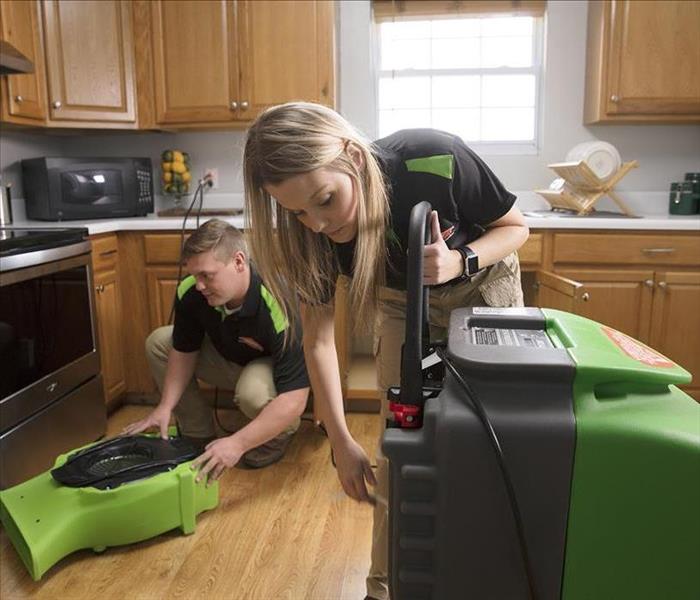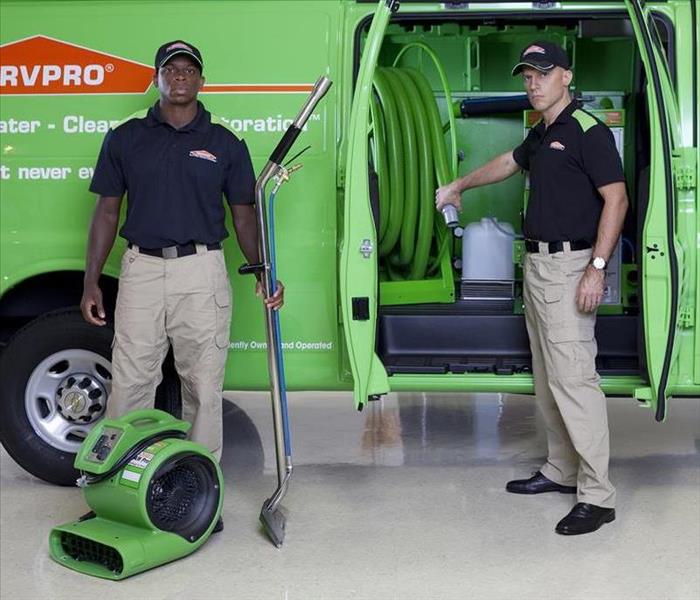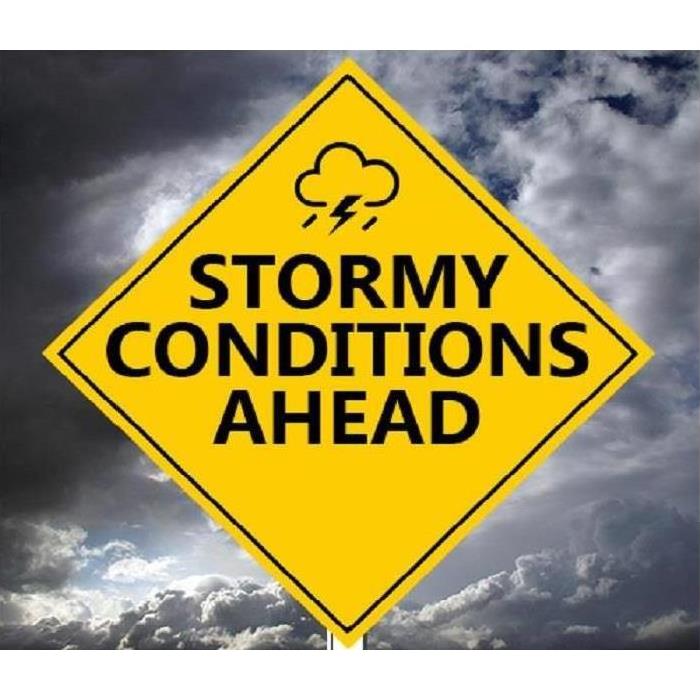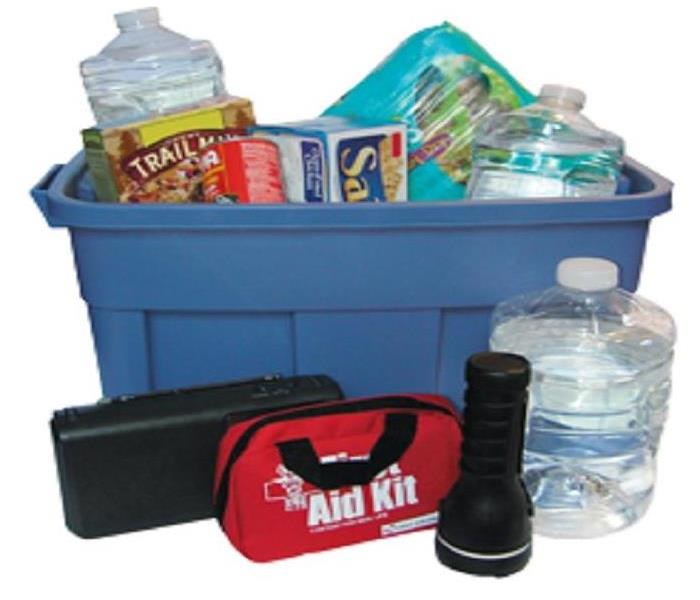Recent Storm Damage Posts
Burrrrrr!!!!! It's Getting Cold Out There!
1/16/2024 (Permalink)
Down here in south Georgia, we do not regularly see temperatures dropping too low. However, this season, it is starting to get cold! Here are some winter tips as we prepare for the upcoming potential freeze!
- Keep your gas tank almost half full (or full) this will prevent the fuel line from freezing.
- Don't forget to crank up your car in the morning before you need to leave. Those windshields will most likely be frozen over!
- Drip those outdoor pipes. You don't want to have a flooded yard.
- Drip those indoor pipes to keep the water flowing so a pipe does not burst in the middle of the night.
- Keep in mind- your pets! Yes, some types/breeds of animals love the cold weather, but some are not built for the cold. They will love sleeping inside.
Keeping warm and staying safe during these cold winter nights is very important. However if you find yourself in a situation where you have a pipe burst in your home, call us at 912-764-9542 so we can help you!
Tornado Watch Or Warning? Know the Difference.
1/2/2022 (Permalink)
Multiple tornadoes have hit different areas in South Georgia over the last week, leaving homes destroyed and losing loved ones. How should one prepare for such a dangerous situation?
You should know the difference between a Tornado Watch and a Tornado Warning.
Be Prepared!
According to www.weather.gov, A Tornado Watch means that "tornadoes are possible in and near the watch area." You should be prepared with supplies and a plan of safety with a safe room.
Take Action!
A Tornado Warning means that "a tornado has been sighted or indicated by weather radar. There is imminent danger to life and property." You should be in the lowest level of your home, away from windows. "If in a mobile home, a vehicle, or outdoors, move to the closest substantial shelter and protect yourself from flying debris."
You should wait as long as possible after you no longer hear the wind noises before you move away from your safe space. You cannot fully know how safe the area is so be extra cautious while leaving your safe area.
A Few Tips on Getting Prepared for Thunderstorms and Severe Weather
8/26/2021 (Permalink)
Be Prepared for Thunderstorms and Severe Weather
- Learn about your local community’s emergency warning system for severe thunderstorms.
- Discuss thunderstorm safety and lightning safety with all members of your household.
- Pick a safe place in your home for household members to gather during a thunderstorm. This should be away from windows, skylights, and glass doors that could be broken by strong winds or hail.
- Make a list of items to bring inside in the event of a severe thunderstorm.
- Make trees and shrubbery more wind resistant by keeping them trimmed and removing damaged branches.
- Protect your animals by ensuring that any outside buildings that house them are protected in the same way as your home.
- Consult your local fire department if you are considering installing lightning rods.
- Get trained in first aid and learn how to respond to emergencies.
- Put together an emergency preparedness kit
- Water—one gallon per person, per day
- Food—non-perishable, easy-to-prepare
- Flashlight
- Battery-powered or hand-crank radio (NOAA Weather Radio, if possible)
- Extra batteries
- First aid kit
- Medications (7-day supply) and medical items
- Multi-purpose tool
- Sanitation & personal hygiene items
- Copies of personal documents
- Cell phone with chargers
- Family & emergency contact information
- Extra cash
When a Storm Hits
8/26/2021 (Permalink)
Whether it is a Category 5 hurricane or a bad thunderstorm rolling through, homeowners should be prepared for any storm.
Take Safety Precautions
Any type of heavy winds can cause roof shingles, natural debris, or unnatural debris to occur. After the storm is over, take precautions when going outside because there could be debris such as nails, sharp wood, or other potentially dangerous items that are around your home.
Photograph the Damage
If it is major or minor, take pictures IMMEDIATELY. You may not realize that something damaged your home until after you have moved it, so take pictures just in case! Insurance companies will need to see before pictures of the damage.
Contact your Insurance Company… and SERVPRO!
A homeowner must call their insurance company so an adjuster can be sent out to examine the damage so payment can be made... Don’t forget to call your favorite restoration and mediation company, SERVPRO of Statesboro. We work around the clock to ensure happiness in our community! We will send a team out as quickly as possible to begin work for your home if disaster strikes!
Storm Ready Kit
8/21/2021 (Permalink)
 You can never be too prepared!
You can never be too prepared!
It feels as if we are constantly prepping for a storm - whether that is a hurricane, thunderstorm, or even the rare winter storm that passes through the southern part of Georgia.
Our team at SERVPRO headquarters (HQ) has put together a list of basic household items you may want to keep in stock and store in a weather proof, safe place in case you find yourself in an emergency storm situation. We encourage checking on your items every 3 months to ensure they are in working order and haven't passed the expiration date.
Suggested items:
- Water- one gallon per person for at least three days.
- Food- at least a three day supply of non-perishable food.
- Battery powered or hand crank radio
- Flashlight.
- Extra batteries.
- Candles.
- Phone chargers.
- Road flares.
- Rain ponchos.
- Tarp.
- Wet wipes.
- A whistle to signal for help.
When you get caught in a storm, damage to your home is likely. It could be from a limb on your tree or rain leaking through a window. If you see any damage to your home due to a storm, call SERVPRO of Statesboro at (912) 764-9542 so we can help you through the mitigation process.
How to Prepare for a Hurricane
8/21/2021 (Permalink)
 We are always ready to help!
We are always ready to help!
As the weather begins to improve, hurricane season always sneaks up on our area. SERVPRO of Statesboro is part of the Disaster Response Team with SERVPRO. We know how difficult it can be when a storm hits. Because of this, we always want to have the best and most current tips on hurricane preparedness. Here are a few hurricane preparation tips for homeowners.
1. When a storm is approaching, always keep your eye close on the weather channel. As we have seen the past few years, the hurricane can change its path constantly.
2. If a hurricane is coming your way, go through your belongings and find the important paperwork for your house and vehicles to keep with you in the event of an evacuation.
3. If you experience back water flooding it is important to remember the water is contaminated. Make sure to decontaminate any items that may have come in contact with the water.
4. Do not drive in rising water. Wait until water recedes to go into your home.
5. Take pictures, plenty of pictures. It is important to remember to include time stamps to show insurance companies when image was taken.
If a hurricane damages your home, we will be there to help with the aftermath. If you have any questions or concerns about hurricane damage, please call our Statesboro SERVPRO office at (912) 764-9542.
Thunderstorm Preparedness
8/21/2021 (Permalink)
Be Prepared for Thunderstorms and Severe Weather
- Learn about your local community’s emergency warning system for severe thunderstorms
- Discuss thunderstorm safety and lightning safety with all members of your household
- Pick a safe place in your home for household members to gather during a thunderstorm This should be away from windows, skylights and glass doors that could be broken by strong winds or hail
- Make a list of items to bring inside in the event of a severe thunderstorm
- Make trees and shrubbery more wind resistant by keeping them trimmed and removing damaged branches
- Protect your animals by ensuring that any outside buildings that house them are protected in the same way as your home
- Consult your local fire department if you are considering installing lightning rods
- Get trained in first aid and learn how to respond to emergencies
- Put together an emergency preparedness kit:
- Water—one gallon per person, per day
- Food—non-perishable, easy-to-prepare
- Flashlight
- Battery-powered or hand-crank radio (NOAA Weather Radio, if possible)
- Extra batteries
- First aid kit
- Medications (7-day supply) and medical items
- Multi-purpose tool
- Sanitation & personal hygiene items
- Copies of personal documents
- Cell phone with chargers
- Family & emergency contact information
- Extra cash
When Storms or Floods hit the Statesboro area, SERVPRO is ready!
8/17/2021 (Permalink)
 Our highly trained crews are ready to respond 24/7 to storm or flood damage in the Statesboro Area.
Our highly trained crews are ready to respond 24/7 to storm or flood damage in the Statesboro Area.
SERVPRO of Statesboro specializes in storm and flood damage restoration. Our crews are highly trained and we use specialized equipment to restore your property to its pre-storm condition.
Faster Response
Since we are locally owned and operated, we are able to respond quicker with the right resources, which is extremely important. A fast response lessens the damage, limits further damage, and reduces the restoration cost.
Resources to Handle Floods and Storms
When storms hit the Statesboro area, we can scale our resources to handle a large storm or flooding disaster. We can access equipment and personnel from a network of 1,650 Franchises across the country and elite Disaster Recovery Teams that are strategically located throughout the United States.
Have Storm or Flood Damage? Call Us Today (912) 764-9542
Be prepared for thunderstorms and severe weather
4/16/2020 (Permalink)
 Follow our tips to be prepared for any type of weather conditions.
Follow our tips to be prepared for any type of weather conditions.
Be Prepared for Thunderstorms and Severe Weather
- Learn about your local community’s emergency warning system for severe thunderstorms
- Discuss thunderstorm safety and lightning safety with all members of your household
- Pick a safe place in your home for household members to gather during a thunderstorm This should be away from windows, skylights and glass doors that could be broken by strong winds or hail
- Make a list of items to bring inside in the event of a severe thunderstorm
- Make trees and shrubbery more wind resistant by keeping them trimmed and removing damaged branches
- Protect your animals by ensuring that any outside buildings that house them are protected in the same way as your home
- Consult your local fire department if you are considering installing lightning rods
- Get trained in first aidand learn how to respond to emergencies
- Put together an emergency preparedness kit:
- Water—one gallon per person, per day
- Food—non-perishable, easy-to-prepare
- Flashlight
- Battery-powered or hand-crank radio (NOAA Weather Radio, if possible)
- Extra batteries
- First aid kit
- Medications (7-day supply) and medical items
- Multi-purpose tool
- Sanitation & personal hygiene items
- Copies of personal documents
- Cell phone with chargers
- Family & emergency contact information
- Extra cash
Important Storm Tips for Spring & Summer
4/15/2020 (Permalink)
Each year, thunderstorms alone cause approximately $15 billion in property damage. Summer and spring seasons are the most vulnerable to these destructive and frightening storms.
There are several ways to prepare your property for the summer.
1. Always have an emergency kit with these items that you probably already have in your house: flashlight, battery powered weather radio, extra batteries to fit each electronic, non-perishable foods, lots of bottled water, can opener, first aid kit, fire extinguisher, blankets, extra clothes, sturdy shoes or boots, clock or watch, whistle to signal for help, and any important personal items and documents.
2. Know the safest structure of your home to go to during a severe storm such as a basement, underground cellar, or even the most inner part of your home away from windows.
3. Get routine maintenance on your roof and the foundation. Cracks in the roof are the number one leading cause to flooding damage.
4. Cut down any unwanted trees or limbs and get your trees trimmed before summer storm season. Trees and branches can fall on your property and damage the siding, windows, and roof.
5. Contact your insurance company to be more familiar with your policy. Most home insurers do not cover flooding damage.
6. Keep all expensive and favored possessions off the floor and away from low ground in case of flooding.
7. Invest in storm windows.
8. Keep all patio furniture, grills, etc in doors before a summer storm hits. Do not forget to part your vehicles in the garage.
9. If your town is evacuating due to a hurricane, secure and board up windows and any openings of your home.
10. Finally, take those summer storm warnings and alerts seriously, especially tornado and hurricane warnings. Tornadoes and hurricanes can lead to total property loss and even death.
When a Storm Hits
4/15/2020 (Permalink)
Whether it is a Category 5 hurricane or a bad thunderstorm rolling through, home owners should be prepared for any storm.
Take safety precautions
Any type of heavy winds can cause roof shingles, natural debris, or unnatural debris to occur. After the storm is over, take precaution when going outside because there could be debris such as nails, sharp wood, or other potentially dangerous items that are around your home.
Photograph the damage
If it is major or minor, take pictures IMMEDIATELY. You may not realize that something damaged your home until after you have moved it, so take pictures just in case (there is always the delete button). Insurance companies will need to see before pictures of the damage.
Contact your insurance company… and SERVPRO!
A homeowner must call their insurance company so an adjuster can be sent out to examine the damage so payment can be made.. Don’t forget to call your favorite restoration and mediation company, SERVPRO of Statesboro. We work around the clock to ensure happiness from our community! We will send a team out as quickly as possible to begin work for your home if disaster strikes!
Tornado Watch & Warning- Know the Difference
4/14/2020 (Permalink)
 Know the difference between a Tornado Watch & a Tornado Warning.
Know the difference between a Tornado Watch & a Tornado Warning.
Multiple tornadoes flew across the CSRA, leaving homes destroyed and losing loved ones. How should one prepare for such a dangerous situation?
First, you should know the difference in a tornado watch and a tornado warning. Tornado watch means that the conditions are perfect for a tornado to form. Tornado warning means that one has been spotted, and you should take cover fast.
Secondly, everyone should get to a safe location. This safe location should be on the lowest area of the house or building and free of any windows. If you do not have a room without any windows, get in the tub and put a mattress over you.
Thirdly, if you are outside and cannot get to a building, get to a ditch and lay as flat as possible. If you have a cushion or blanket (anything soft to hold over you) of some sort, try keeping that above you to protect you from flying debris. You should NEVER seek shelter under a bridge as this can be one of the most dangerous places to be during a tornado. The bridge can create a more dangerous tunnel of wind.
TIP: If you are in a mobile home, find a secure storm shelter or building to wait out the storm in.
Finally, you should wait as long as possible after you no longer hear the wind noises before you move away from your safe space. You cannot fully know how safe the area is so be extra cautious while leaving your safe are.
If you find yourself looking at a pile of debris that was once your home, call SERVPRO of Statesboro to help after a storm.
Prepping For A Storm
4/12/2020 (Permalink)
When a storm is approaching your home, there are some steps you can take to minimize any potential damages from strong storms and potential flooding. If you know a heavy storm is coming and you have time, follow these steps.
- Make sure all your windows are shut tightly.
- Bring in or tie down any outside furniture.
- Make sure your gutters are clean to allow water to flow away from your home.
- Cut down any dead branches or limbs around your home.
- Seal any water leaks on your roof if possible.
Be prepared to lose power for any length of time. Strong storms can bring heavy winds which can cause power outages. Even a few hours of no power can be difficult to handle especially with young children. Go to our Storm Ready Kit blog to read about a kit to create to help with the loss of power.
Storm Ready Kit
4/12/2020 (Permalink)
 Always be prepared & there is never such thing as being overly prepared.
Always be prepared & there is never such thing as being overly prepared.
It feels as if we are constantly prepping for a storm - whether that is a hurricane, thunderstorm, or even the rare winter storm that passes through the southern part of Georgia.
Our team at SERVPRO headquarters (HQ) has put together a list of basic household items you may want to keep in stock and store in a weather proof, safe place in case you find yourself in an emergency storm situation. We encourage checking on your items every 3 months to ensure they are in working order and haven't passed the expiration date.
Suggested items:
- Water- one gallon per person for at least three days.
- Food- at least a three day supply of non-perishable food.
- Battery powered or hand crank radio
- Flashlight.
- Extra batteries.
- Candles.
- Phone chargers.
- Road flares.
- Rain ponchos.
- Tarp.
- Wet wipes.
- A whistle to signal for help.
When you get caught in a storm, damage to your home is likely. It could be from a limb on your tree or rain leaking through a window. If you see any damage to your home due to a storm, call us at (912) 764-9542 so we can help you through the mitigation process.
Spring and Summer Storm Tips
4/16/2019 (Permalink)
Each year, thunderstorms alone cause approximately $15 billion in property damage. Summer and spring seasons are the most vulnerable to these destructive and frightening storms.
There are several ways to prepare your property for the summer.
1. Always have an emergency kit with these items that you probably already have in your house: flashlight, battery powered weather radio, extra batteries to fit each electronic, non-perishable foods, lots of bottled water, can opener, first aid kit, fire extinguisher, blankets, extra clothes, sturdy shoes or boots, clock or watch, whistle to signal for help, and any important personal items and documents.
2. Know the safest structure of your home to go to during a severe storm such as a basement, underground cellar, or even the most inner part of your home away from windows.
3. Get routine maintenance on your roof and the foundation. Cracks in the roof are the number one leading cause to flooding damage.
4. Cut down any unwanted trees or limbs and get your trees trimmed before summer storm season. Trees and branches can fall on your property and damage the siding, windows, and roof.
5. Contact your insurance company to be more familiar with your policy. Most home insurers do not cover flooding damage.
6. Keep all expensive and favored possessions off the floor and away from low ground in case of flooding.
7. Invest in storm windows.
8. Keep all patio furniture, grills, etc in doors before a summer storm hits. Do not forget to part your vehicles in the garage.
9. If your town is evacuating due to a hurricane, secure and board up windows and any openings of your home.
10. Finally, take those summer storm warnings and alerts seriously, especially tornado and hurricane warnings. Tornadoes and hurricanes can lead to total property loss and even death.
Prep for a Hurricane
2/27/2019 (Permalink)
As the weather begins to improve, hurricane season always sneaks up on our area. SERVPRO of Statesboro is part of the Disaster Response Team with SERVPRO. We know how difficult it can be when a storm hits. Because of this, we always want to have the best and most current tips on hurricane preparedness. Here are a few hurricane preparation tips for homeowners.
1. When a storm is approaching, always keep your eye close on the weather channel. As we have seen the past few years, the hurricane can change its path constantly.
2. If a hurricane is coming your way, go through your belongings and find the important paperwork for your house and vehicles to keep with you in the event of an evacuation.
3. If you experience back water flooding it is important to remember the water is contaminated. Make sure to decontaminate any items that may have come in contact with the water.
4. Do not drive in rising water. Wait until water recedes to go into your home.
5. Take pictures, plenty of pictures. It is important to remember to include time stamps to show insurance companies when image was taken.
If a hurricane damages your home, we will be there to help with the aftermath. If you have any questions or concerns about hurricane damage, please call our office at (912) 764-9542.
Thunderstorm Preparedness
10/26/2017 (Permalink)
 The Red Cross and SERVPRO are always here to help!
The Red Cross and SERVPRO are always here to help!
Be Prepared for Thunderstorms and Severe Weather
- Learn about your local community’s emergency warning system for severe thunderstorms
- Discuss thunderstorm safety and lightning safety with all members of your household
- Pick a safe place in your home for household members to gather during a thunderstorm This should be away from windows, skylights and glass doors that could be broken by strong winds or hail
- Make a list of items to bring inside in the event of a severe thunderstorm
- Make trees and shrubbery more wind resistant by keeping them trimmed and removing damaged branches
- Protect your animals by ensuring that any outside buildings that house them are protected in the same way as your home
- Consult your local fire department if you are considering installing lightning rods
- Get trained in first aidand learn how to respond to emergencies
- Put together an emergency preparedness kit:
- Water—one gallon per person, per day
- Food—non-perishable, easy-to-prepare
- Flashlight
- Battery-powered or hand-crank radio (NOAA Weather Radio, if possible)
- Extra batteries
- First aid kit
- Medications (7-day supply) and medical items
- Multi-purpose tool
- Sanitation & personal hygiene items
- Copies of personal documents
- Cell phone with chargers
- Family & emergency contact information
- Extra cash
Are you Ready for Hurricane Season?
6/2/2016 (Permalink)
Are you ready for a hurricane?
Listen to a NOAA Weather Radio (Available on the Red Cross Store) for critical information from the National Weather Service (NWS).Check your disaster supplies. Replace or restock as needed.Bring in anything that can be picked up by the wind (bicycles, lawn furniture).Close your windows, doors and hurricane shutters. If you do not have hurricane shutters, close and board up all windows and doors with plywood.Turn your refrigerator and freezer to the coldest setting. Keep them closed as much as possible so that food will last longer if the power goes out. Turn off propane tank. Unplug small appliances.Fill your car’s gas tank.Create a hurricane evacuation plan with members of your household. Planning and practicing your evacuation plan minimizes confusion and fear during the event.Find out about your community’s hurricane response plan. Plan routes to local shelters, register family members with special medical needs and make plans for your pets to be cared for.Obey evacuation orders. Avoid flooded roads and washed out bridges.Standard homeowners insurance doesn’t cover flooding. It’s important to have protection from the floods associated with hurricanes, tropical storms, heavy rains and other conditions that impact the U.S. For more information on flood insurance, please visit the National Flood Insurance Program Web site at www.FloodSmart.gov.


 24/7 Emergency Service
24/7 Emergency Service






